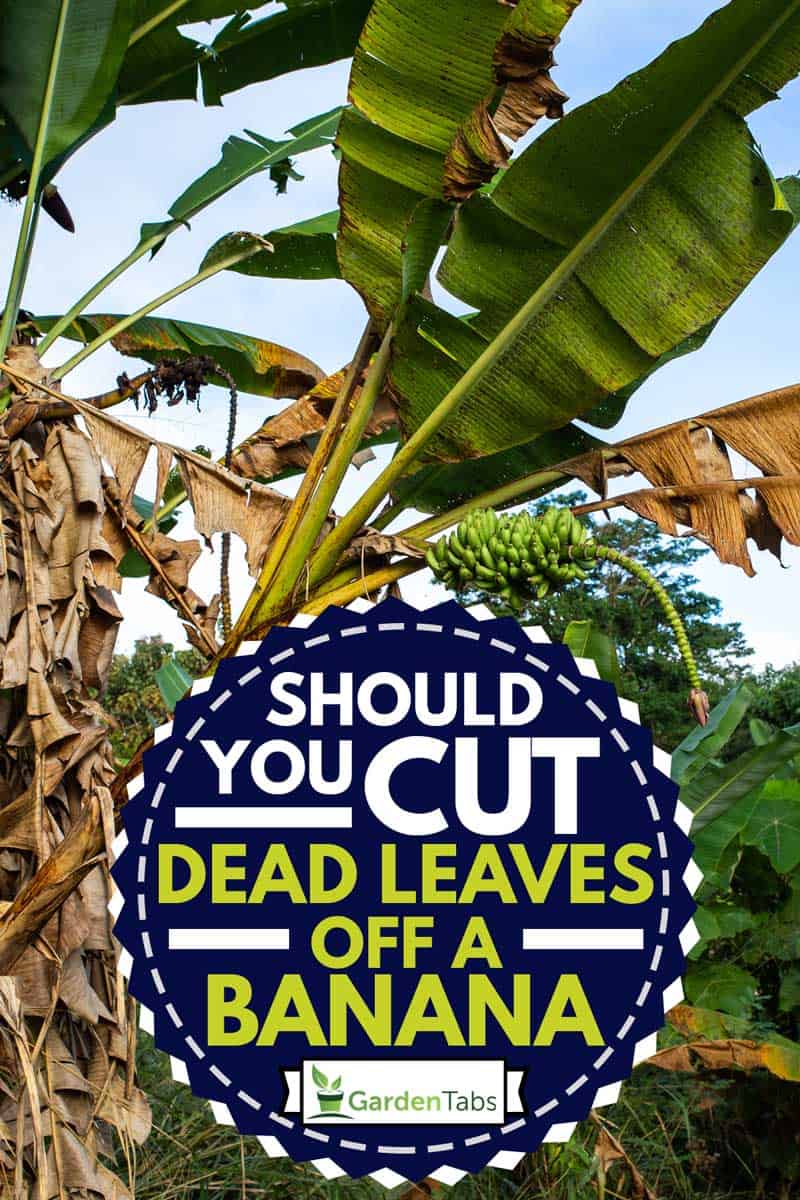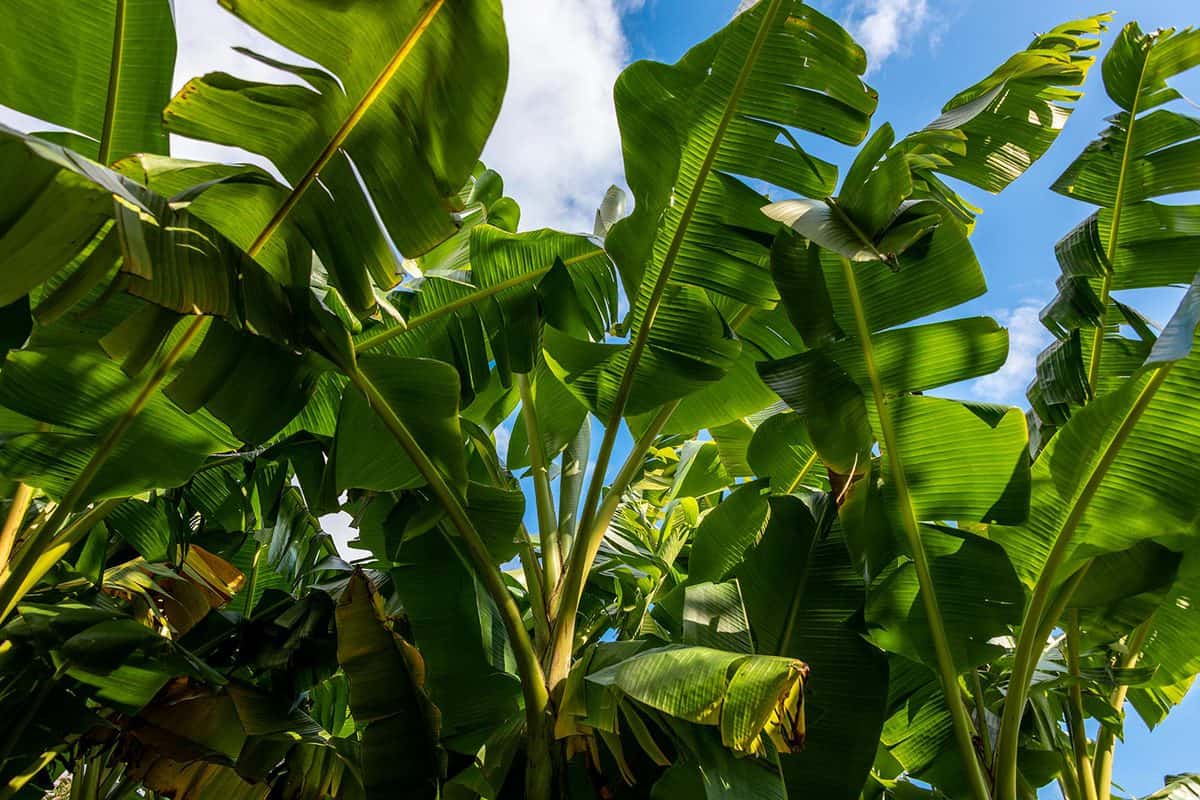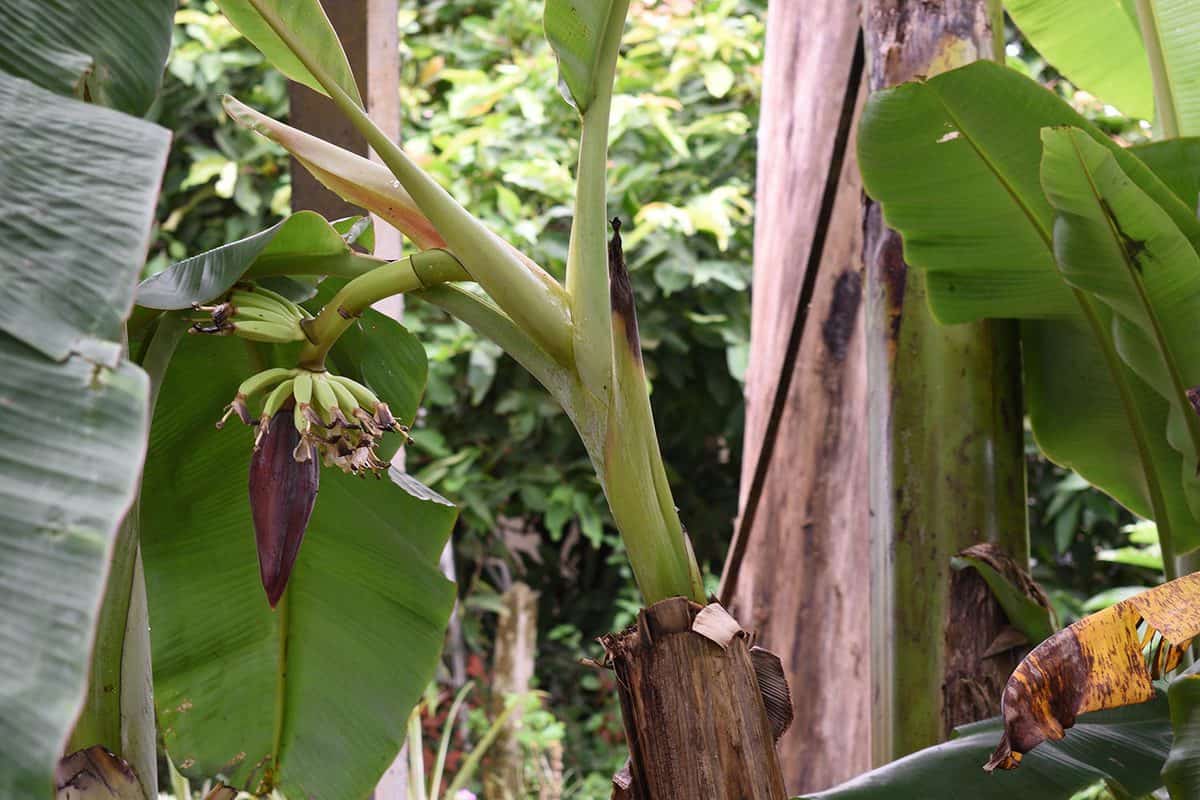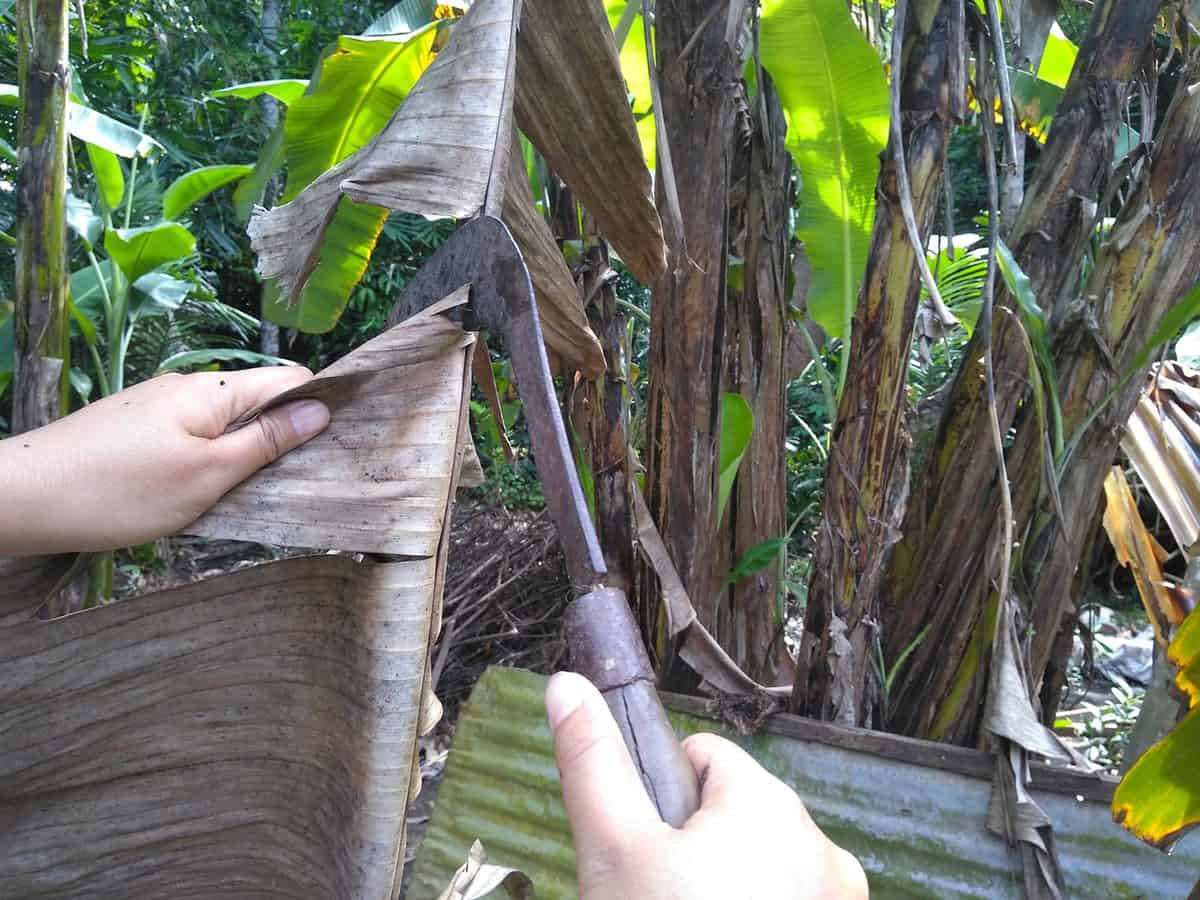 Many adventurous gardeners enjoy the thrill of growing a banana tree. Pruning is necessary to help plants grow and look their best.
Many adventurous gardeners enjoy the thrill of growing a banana tree. Pruning is necessary to help plants grow and look their best.
Even a banana tree can benefit from pruning and maintenance when unsightly leaves that are damaged, discolored, or dead are visible.
Although banana trees are a tropical and resilient plant, there are some helpful tips you should know.
You should trim dead leaves off of a banana tree to encourage growth and maintain a beautiful appearance. When a banana tree is not getting enough water, leaves can become dry and turn brown, and they cannot be revived.
You may need to trim away dead leaves if they succumb to the cold or high winds. Banana leaves will turn yellow from overwatering, disease, or cold.
Don't worry if you need to cut dead leaves off of your banana plant. It is necessary to remove damaged, diseased, yellow, or dead leaves from a banana tree to keep it healthy.
If you want to learn the best methods for pruning a banana tree and how cutting dead leaves helps your plant flourish, you should keep reading.
Revive Your Banana Tree With A Trim
Leaves on banana trees can easily grow up to 10 feet in length and measure between 2 and 4 feet in width. If you have to cut the leaves on a lofty banana tree growing outdoors, be prepared to grab a ladder to reach problem areas.
Pruning the leaves on a banana tree growing indoors is thankfully a bit more manageable. The leaves of a banana tree are sensitive and may show signs of splitting, disease, or problems with watering frequency or humidity.
It is essential to properly protect your banana tree before the onset of winter to reduce the damage to the leaves and the plant.
You will want to cut away dead leaves down to the trunk to stimulate flowering and the production of fruit, to reduce disease, for aesthetic value, or because of visible damage.
It may be wise to prune a banana tree a bit before the onset of winter to stimulate new growth when spring arrives. Be mindful that any leaves that are rubbing up against fruit can inhibit your banana yield.
Pruning leaves on a banana tree is helpful for many reasons and is overall beneficial for the plant. You may be surprised how much the leaves of a banana tree can tell you about the plant's health and overall needs to thrive.
Keep reading and discover more about your banana tree.
Why Are The Leaves On My Banana Tree Turning Brown?

When the leaves on a banana tree turn green to brown or begin to show brown-colored edges, it is a sign of either dehydration or insufficient nutrients.
Usually, if something is interfering with the root system, a banana tree may have problems circulating much-needed nutrients or moisture throughout the plant. Dehydration, overwatering, and stress can all cause a banana leaf to turn brown.
The banana tree is a tropical plant that thrives in zones 9 and 10, but prolonged exposure to cold and dry weather can cause a banana tree's leaves to turn brown.
Do Banana Tree Leaves Grow Back?

After winter passes, a banana tree may appear dormant or possibly dead, however, resist the urge to cut down the plant. New growth on a banana tree will emerge from the topmost part of the trunk.
The leaves on a banana tree can grow back, even if you cut down the pseudostem too far, as long as the rhizome is viable and healthy and the tree can recover.
Leaves that are dehydrated, wilted, yellow, or brown in color should be removed and will not grow back nor return to a healthy green color.
Be careful when removing the leaves on a banana tree; cut at the point where the stem meets the stalk, and try to reduce the chance of damaging the pseudostem.
When Should Banana Trees Be Pruned?

The leaves of a banana tree should be pruned if they show signs of wilting, dryness, holes, discoloration, splitting, or disease.
Healthy banana leaves may be pruned at a gardener's discretion if they are rubbing up against bunches of fruit, which can inhibit the yield of bananas produced.
When pruning a banana tree, you want to clip away the leaves, but avoid cutting away at the pseudostem.
You will want to prune banana trees because of visible frost damage, spots, if the leaves are brown or yellow in color, or if there are signs of insect damage or disease.
After a banana tree comes out of winterization, it is best to wait until the last frost period before trimming leaves.
Make sure not to cut back the pseudostem, as that can interfere with the development of flowers and fruit.
Check out these classic pruning shears on Amazon.
How To Prune Leaves On A Banana Tree?.

Giving your banana tree proper attention throughout the seasons is vital to keeping your tree looking lush and staying healthy.
During the spring and summer, insects may cause holes in leaves. In the fall, frost may cause damage. And the winter can lead to leaves turning brown and withering away.
When pruning leaves on a banana tree, you will want to cut leaves that are on the outermost layers and work your way toward the trunk. It is important to cut a leaf at the stalk, leaving at least half an inch of room between the stalk and the trunk.
Cutting too close to the trunk might cause damage and lead to fewer flowers and fruit in the future. Make sure to use sharp shears, cut leaf stems at a 45-degree angle, and remove additional stalks and suckers in addition to dead or damaged leaves for a healthy tree.
Check out these handy gardening gloves on Amazon.
Check out this multipurpose ladder on Amazon.
How Do You Dispose Of A Dead Banana Tree?

Once a banana tree has successfully produced fruit and has been harvested, the plant will die. One question you might have is what can be done with the remains of a dead banana tree? Luckily, bananas, their leaves, and the trunk of the tree can be composted.
The banana tree can live an average lifespan of 5 to 6 years, but it will produce fruit only after reaching maturation and a period of 9 months has passed under ideal conditions.
When a banana tree has perished or you need to fell the plant, chop down the tree at its base, and dig up the roots. Older trees may have a more extensive root system than a younger tree, so be prepared.
If a banana tree died because of disease, it is essential to dig up and destroy any roots, leaves, or pieces of the plant to prevent contamination in the garden. Only compost healthy banana trees, their leaves, fruit, and trunk.
Check out this nifty compost bin on Amazon.
Before you go, be sure to check out these other gardening guides:




